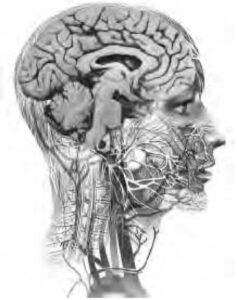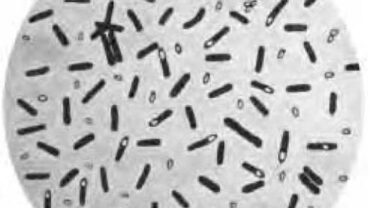Brain stem
brain stem (brainstem) The oldest and inferior portion of the brain that consists of the midbrain, pons, reticular formation, thalamus, and medulla oblongata,
| Artwork combining profiles of brain and head anatomy. The brain is seen sliced in half to show internal anatomy. The brain’s major area, the cerebrum, includes the folded outer layer (cerebral cortex) that produces memory, language, and conscious movement. The central space is a brain ventricle. The brain stem, at the base of the brain, controls subconscious functions like breathing. It extends downwards and connects to the spinal cord in the neck. The cerebellum (round area, at left of the brainstem) controls balance as well as muscle coordination. The head and neck blood vessels branch from the major chest vessels at bottom. (Courtesy © Mehau Kulyk/Photo Researchers, Inc.) |
and forms a cap on the anterior end of the spinal cord. The brain stem is the base of the brain and connects the brain’s cerebrum to the spinal cord. It shares several features in common with the brain of reptiles and controls automatic and motor basic functions such as heart rate and respiration and also is the main channel for sensory and motor signals.





